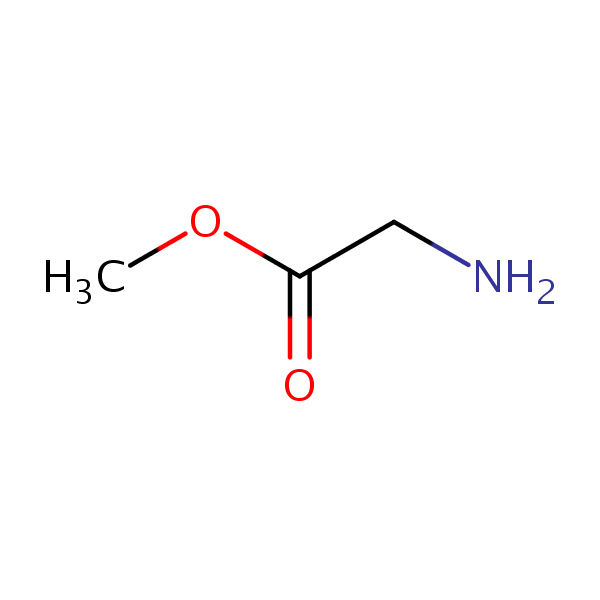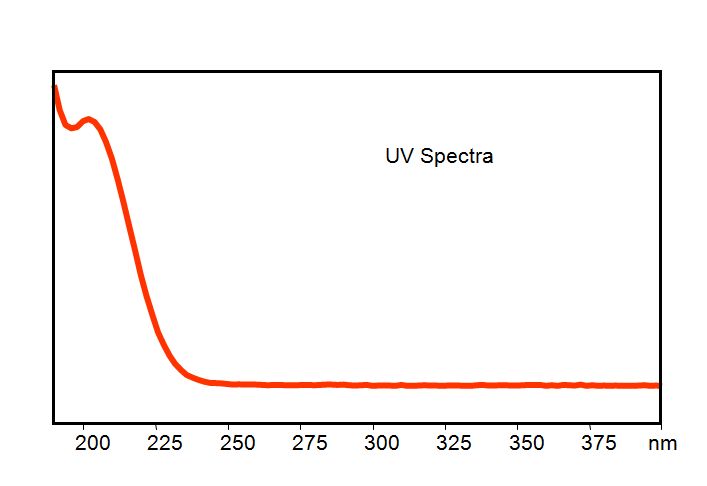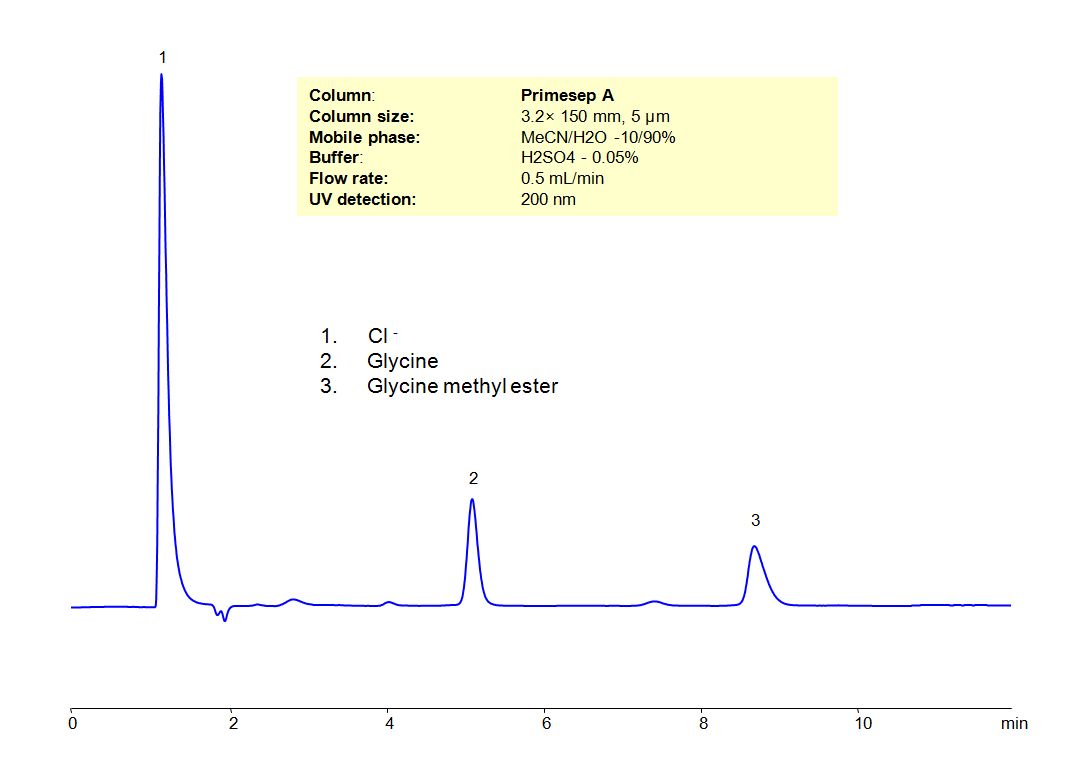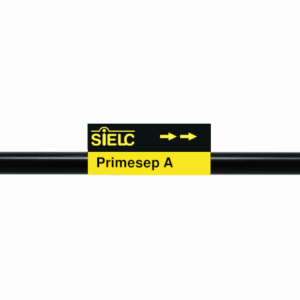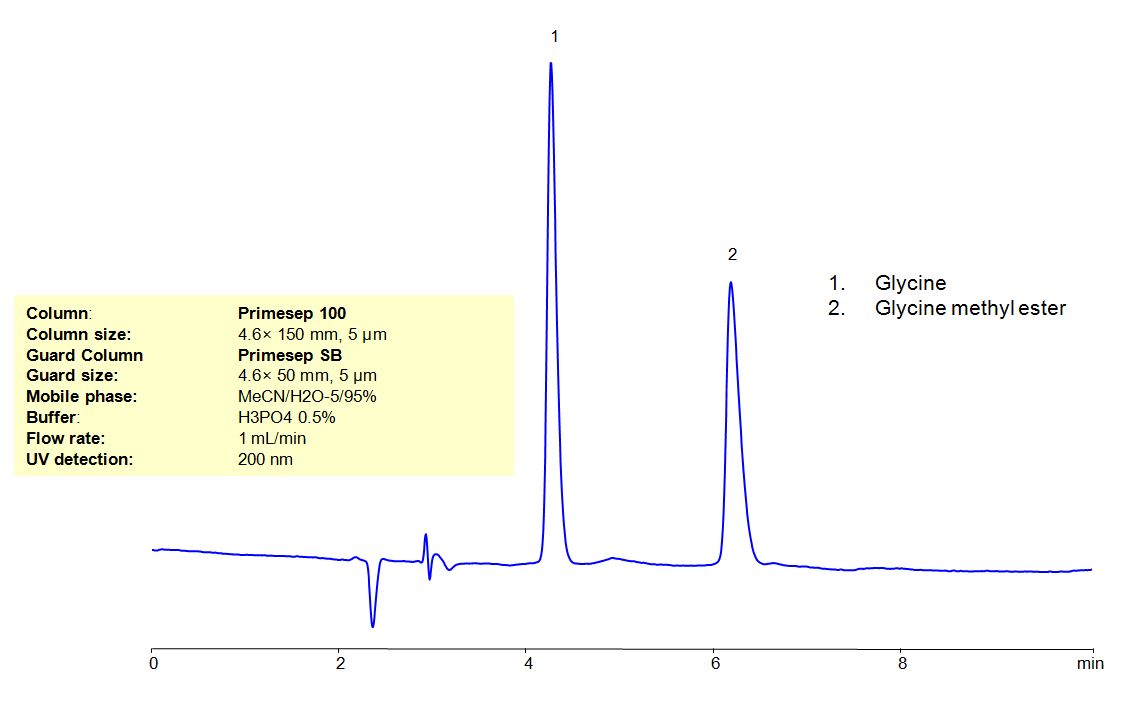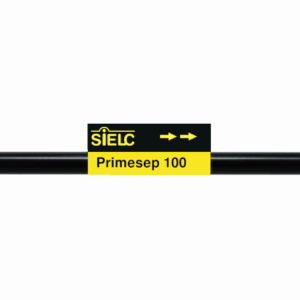| CAS Number | 616-34-2 |
|---|---|
| Molecular Formula | C3H7NO2 |
| Molecular Weight | 89.095 |
| InChI Key | KQSSATDQUYCRGS-UHFFFAOYSA-N |
| LogP | -1.18 |
| Synonyms |
|
Applications:
HPLC Method for Analysis of Glycine Methyl Ester Hydrochloride
October 26, 2018
HPLC Method for Glycine methyl ester, Glycine on Primesep A by SIELC Technologies
High Performance Liquid Chromatography (HPLC) Method for Analysis of Glycine methyl ester, Glycine
Glycine Methyl Ester Hydrochloride is a water soluble organic compound that is typically used in synthesis of pharmaceuticals and pesticides. Besides that, it is also used as a flavor enhancer and nutritional supplement.
Glycine Methyl Ester Hydrochloride can be retained and analyzed using the Primesep-A stationary phase column. The analysis utilizes an isocratic method with a simple mobile phase consisting of water and acetonitrile (MeCN) with a sulfuric acid buffer. Detection is performed using UV.
| Column | Primesep A, 3.2 x 150 mm, 5 µm, 100 A, dual ended |
| Mobile Phase | MeCN/H2O – 10/90% |
| Buffer | H2SO4 – 0.05% |
| Flow Rate | 0.05 ml/min |
| Detection | UV, 200 nm |
| Class of Compounds |
Amino acid, Drug, Acid, Hydrophilic, Ionizable, Vitamin, Supplements, Zwitterionic |
| Analyzing Compounds | Glycine methyl ester, Glycine |
Application Column
Primesep A
Column Diameter: 3.2 mm
Column Length: 150 mm
Particle Size: 5 µm
Pore Size: 100 A
Column options: dual ended
Glycine methyl ester

HPLC Method for Analysis of Glycine and Glycine Methyl Ester Hydrochloride
October 25, 2018
HPLC Method for Glycine methyl ester, Glycine on Primesep 100 by SIELC Technologies
High Performance Liquid Chromatography (HPLC) Method for Analysis of Glycine methyl ester, Glycine
Glycine and glycine methyl ester hydrochloride are important amino acid compounds widely used in pharmaceutical, biochemical, and peptide research. Both compounds are water-soluble and play critical roles in protein synthesis, peptide modification, and metabolic studies. High-performance liquid chromatography (HPLC) offers a precise and reliable method to separate, identify, and quantify glycine and its methyl ester derivative with excellent sensitivity and reproducibility. This analytical approach is essential for quality control, pharmaceutical formulation analysis, and research applications involving amino acid derivatives. Using HPLC for these compounds ensures accurate, consistent results in laboratory and industrial settings.
| Column | Primesep 100, 4.6 x 150 mm, 5 µm, 100 A, dual ended |
| Mobile Phase | MeCN/H2O – 5/95% |
| Buffer | H3PO4 – 0.5% |
| Flow Rate | 1 ml/min |
| Detection | UV, 200 nm |
| Class of Compounds | Amino acid, Drug, Acid, Hydrophilic, Ionizable, Vitamin, Supplements, Zwitterionic |
| Analyzing Compounds | Glycine methyl ester, Glycine |
Application Column
Primesep 100
Column Diameter: 4.6 mm
Column Length: 150 mm
Particle Size: 5 µm
Pore Size: 100 A
Column options: dual ended
Glycine methyl ester

